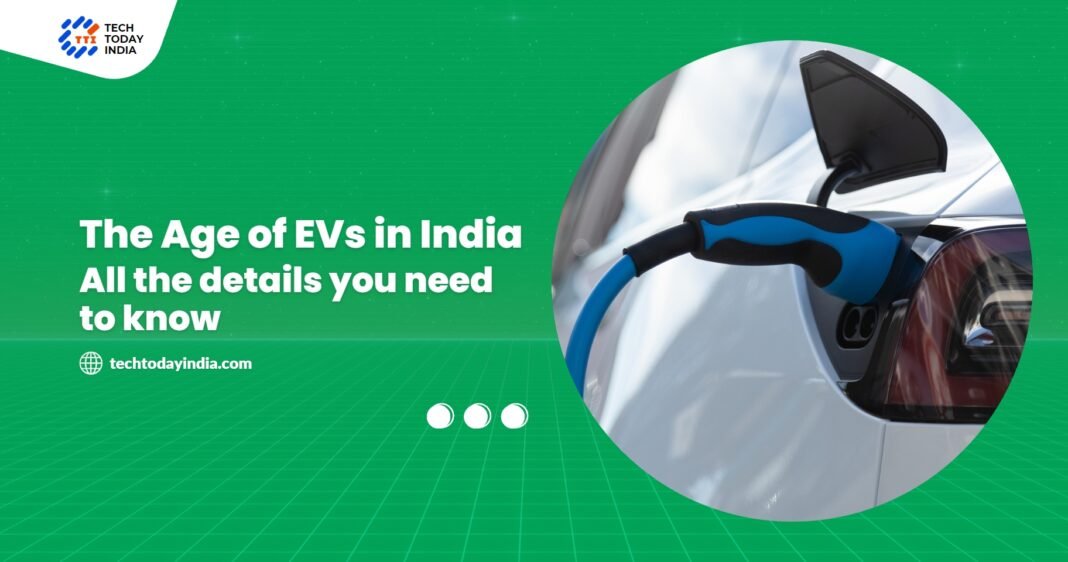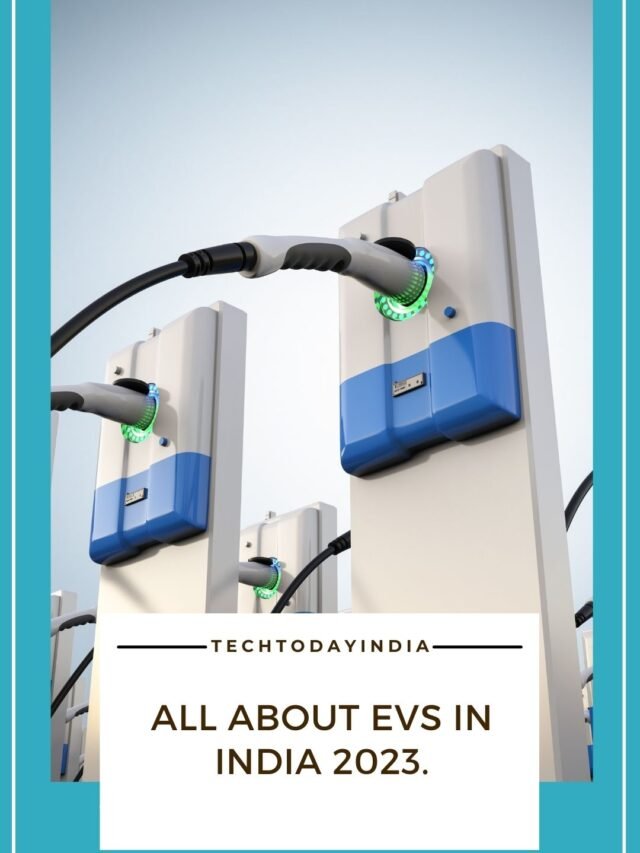EVs in India are thriving in 2023, driven by various factors. Government initiatives like FAME India have provided subsidies for EV purchases, making them more accessible to consumers. Rising fuel prices have also made EVs an attractive alternative, offering a cost-effective solution compared to petrol and diesel vehicles. Moreover, the increasing awareness of the environmental benefits of EVs has accelerated their adoption. With zero emissions Technology, EVs contribute to a cleaner and more sustainable transportation system.
The future of EVs looks promising in India, with continued government support, rising fuel costs, and growing environmental consciousness. These factors are expected to fuel the market’s rapid growth in the coming years. As more individuals and businesses embrace electric mobility, the EV sector will witness advancements and innovations, paving the way for a greener and more sustainable transportation ecosystem.

Table of Contents
A List of Current and Upcoming EVs in India
Everyone has their eyes on the market for the best option to buy an EV. There are many EVs available and many more coming. Here is a list of current and upcoming electric vehicles in India in 2023 and the future.
| Current EVs | Upcoming EVs |
| Tata Nexon EV | Tata Altroz EV |
| Tata Tigor EV | Maruti Suzuki WagonR EV |
| MG ZS EV | |
| MG Comet EV | |
| Mahindra XUV400 EV | |
| Kia EV6 | |
| Hyundai Ioniq 5 |
Tesla has been planning to join the Indian market for some years but has encountered several obstacles, including high import charges and a lack of charging infrastructure. Tesla has reportedly suggested establishing a manufacturing plant in India to produce electric automobiles for both domestic and export markets. According to reports, the business is in talks with the Indian government to gain incentives for the project.

A List of Charging Options for EVs
As the Era of EVs in India is beginning, We all have one question in our mind, How can I charge my car and how long will take to charge it? To answer this question, here are the different EV charging options available in India:
- Home charging
This is the most common way to charge an electric vehicle. It is also the most convenient and affordable option. Home charging stations can be installed in your garage or driveway. They can be either slow or fast chargers. Slow chargers take several hours to charge an EV, while fast chargers can charge an EV in a matter of minutes.
- Public charging
Public charging stations are available at various locations, such as malls, parking garages, and fuel stations. They can be either slow or fast chargers. Public charging stations are more expensive than home charging stations, but they are a convenient option if you do not have access to home charging.
- DC fast charging
DC fast charging is the fastest way to charge an electric vehicle. It can charge an EVs in India in a matter of minutes. DC fast chargers are available at some public charging stations. They are more expensive than other charging options, but they are a good option for long-distance travel.
The Indian government is working to expand the availability of EV charging infrastructure in the country. The government has set a target of installing 2,000 EV charging stations by 2025.
The government has announced a subsidy for the installation of home charging stations. The government is also working to develop a national EV charging standard.

There are also various tools available to locate a charger nearby if you can not charge your car at home. The e-AMRIT Charging Map is a web-based tool that lists public electric vehicle (EV) charging stations across India. The National Institution for Transforming India (NITI Aayog) and the Bureau of Energy Efficiency (BEE) collaborated on the map. The map shows the location, type, and status of public charging stations for EVs in India. It also provides information about charging speeds and costs at each station.
The CarDekho EV charging station webpage lists the location, type, and status of public EV charging stations in India. It also provides information about charging speeds and costs at each station.
Then we have Tata Power, a leading provider of EV charging solutions in India. Tata Power offers a range of products and services, such as home charging stations, public charging stations, mobile charging stations, and charging management software. Tata Power’s EV charging solutions are designed to make it easy and convenient for Indians to switch to electric vehicles.

Pros and Cons of Having EVs
The environmental advantages of driving electric vehicles (EVs), which are becoming more and more popular, are being recognised by more people. Before switching to EVs in India, there are a few benefits and drawbacks to take into account.
Electric vehicles (EVs) are becoming increasingly popular as people become more aware of the environmental benefits of driving electric. However, there are also some pros and cons to consider before making the switch to an EV.
Pros of EVs
- Environmental benefits: EVs produce zero emissions, which can help to improve air quality and reduce greenhouse gas emissions.
- Lower operating costs: The cost of electricity is typically lower than the cost of gasoline, so operating an EV can save you money on fuel costs.
- Less maintenance: EVs have fewer moving parts than petrol or diesel cars, requiring less maintenance.
- Quieter operation: EVs are much quieter than petrol or diesel cars, which can be a plus if you live in a city or other area with a lot of noise pollution.
- More responsive acceleration: EVs have instant torque, which means they can accelerate much faster than petrol or diesel cars.
Cons of EVs
- Limited range: The range of an EV is typically much shorter than the range of a petrol or diesel car.
- Longer charging times: It can take several hours to fully charge an EV, which can be inconvenient if you need to get on the road quickly.
- Higher purchase price: EVs are typically more expensive than petrol or diesel cars.
- Limited availability: The selection of EVs is still relatively limited, and they may not be available in all areas.
- Charging infrastructure: The charging infrastructure for EVs is still developing, and there may not be as many charging stations available as there are gas stations.
In general, EVs provide a variety of benefits over petrol or diesel vehicles, including reduced operating costs and maintenance. There are some disadvantages to take into account, though, including a longer charging time, a shorter range, and a greater upfront cost. When deciding whether or not to transition to an EV, it’s crucial to carefully analyse the advantages and disadvantages.
The Range Anxiety in people
The fear that an electric vehicle (EV) will not have enough battery charge to reach its destination, causing discomfort or stranding, is known as EV Range Anxiety. Things like Limited EV range, insufficient charging infrastructure, and being stranded on the road all contribute to people’s fear and decision to buy EVs in India as their primary vehicle. However, technological developments and growing charging networks are alleviating it.
Longer ranges are available in newer EV models, and more charging stations are being added. Accessibility improves as EV costs fall. To reduce range anxiety, potential EV purchasers can investigate EVs in India about ranges and charging station availability, choose models with longer ranges, plan trips with charging time in mind, and be prepared with backup plans if necessary.

What does the future hold in the Indian market for EVs in India?
More people are becoming aware of the environmental and economic benefits of driving electric cars (EVs), which are becoming increasingly popular. Before making the jump to an EV, there are a few advantages and disadvantages to consider.
In general, EVs in India have several advantages over cars powered by petrol or diesel, including lower operating and maintenance expenses. However, there are certain drawbacks to consider, including a shorter charging time, a reduced range, and a higher initial cost. When determining whether or not to migrate to EVs in India, it is critical to thoroughly weigh the benefits and drawbacks.
Disclaimer:
AI was used to conduct research and help write parts of the article. We primarily use the Gemini model developed by Google AI. While AI-assisted in creating this content, it was reviewed and edited by a human editor to ensure accuracy, clarity, and adherence to Google's webmaster guidelines.






